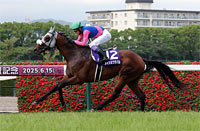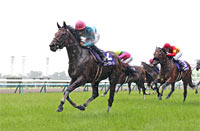2016 News
Data Analysis for the Takarazuka KinenA dream race to conclude the spring racing season The spring G1 racing program reaches its climax with the Takarazuka Kinen. Every year, this race brings together the top performers in middle distance racing as well as others with a fine pedigree in both mile and long-distance contests, making it a truly all-star event. So which horse will take the spoils to close the spring season this time? Let’s look for some hints from results over the last 10 years (including 2006, when the race was held at Kyoto Racecourse). Check the previous race Viewing aggregate performances by runners over the last 10 years in terms of their previous outing, we find that horses most recently contesting the Grade 1 races – namely, the “Tenno Sho (Spring)” and “Victoria Mile” – have produced superior results here. Runners coming straight from the Naruo Kinen trial (or the Kinko Sho up to 2011) have also performed well. Besides these, three horses entering their first race after returning from overseas action (all G1) have finished in the Top 3. In this race, then, our attention should be on horses coming straight from domestic and overseas G1 races, as well as those from important trials. [Table 1] [Table 1] Performance by previous race (last 10 years)
Strong showing from “Top 3” finishers last time out If we summarize performances over the last 10 years by the runners’ finish in their previous outing, those placed in the Top 3 in that race have been notably active here, with 11 Top 3 finishers in this race (including four winners) finishing “1st” last time out. By contrast, although nine horses beaten to “4th or lower” in their previous race have finished in the Top 3 of the Takarazuka Kinen, their success ratios are poor. Incidentally, five runners recovering from “5th or lower” last time out to finish in the Top 2 here had all most recently contested the “Tenno Sho (Spring).” [Table 2] [Table 2] Performance by finish in the previous race (last 10 years)
Check positions at the 4th corner in the most recent race with a Top 2 finish Next, let’s look at performances over the last 10 years in terms of the runners’ position at the 4th corner in their most recent JRA race when they finished in the Top 2. The result is that horses passing that corner in higher positions have achieved better success ratios in this race. In fact, no horse passing the 4th corner positioned “8th or lower” in such a race has won this one. We would do well to check the runners’ racing style in their most recent JRA race resulting in a Top 2 finish. [Table 3] [Table 3] Performance by position at the 4th corner in the most recent JRA race resulting in a Top 2 finish (last 10 years)
Look at the record in medium- to long-distance G1 and G2 turf races Turning to performances over the last 10 years in terms of the runners’ highest finish in G1 and G2 turf races over distances of 2,000m or more within their last four outings, all 10 winners in that time had achieved a highest finish of “1st” in such races. In fact, there is a huge gap between the success ratios of those with a highest finish of “1st” and the total of those with “2nd or lower + No such race.” When comparing recent race records, our attention should be on the record of wins in turf medium- to long-distance G1 and G2 races. [Table 4] [Table 4] Performance by highest finish in 2,000m+ turf G1 and G2 races within the last 4 races (last 10 years)
Seek out the winner! All six winners since 2010 had been backed “Among the Top 3 favorites” in their previous outing. It seems we can have high expectations of horses that were strongly favored by racing fans last time out. [Table 5] [Table 5] Winners' favoritism in their previous race (last 6 years)
(Yasunori Asano) |
|




















